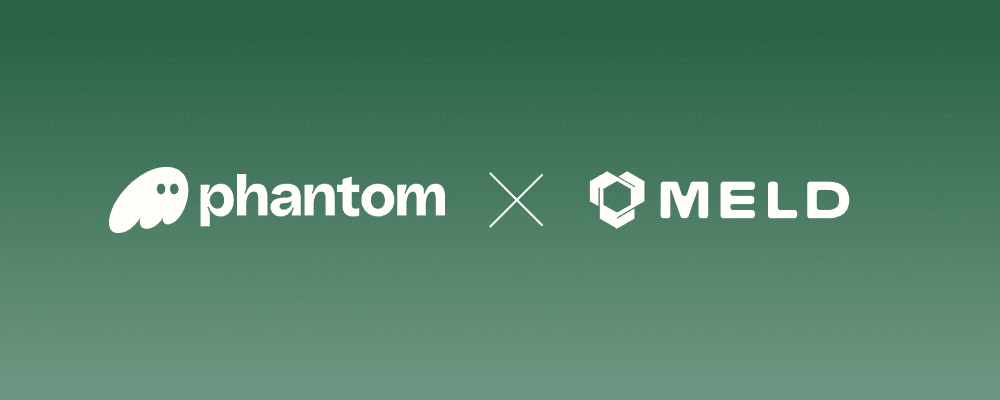
Introducing Meld Network: Access Digital Assets Anywhere
Digital Assets • Stablecoins • Identity • Network
Nov 18th, 2025
Bank Linking Stack • Account Aggregators • Consumer Permissioned Data
From Traditional to Tech-Driven: The Evolution of Lending PlatformsDecember 19th, 2023 | 6 mins

The lending landscape has undergone a remarkable transformation, evolving from traditional, paper-based processes to dynamic, tech-driven platforms. At the forefront of this revolution and reshaping the lending sector is bank linking aggregators. This technology streamlines financial transactions, making lending more accessible, efficient, and secure for both lenders and borrowers.
The journey of lending platforms from their traditional roots to the current digital era is a story of significant transformation. In the old-world model, lending was synonymous with extensive paperwork, prolonged waiting periods for loan approvals, and the necessity of in-person meetings. This process was often cumbersome and time-consuming, limiting the accessibility and efficiency of financial services. The advent of digital technology heralded a new age for the lending industry.
The shift to online lending platforms brought with it a host of benefits: streamlined application processes, rapid loan approvals, and the convenience of managing loans from anywhere at any time. This digital evolution not only enhanced the user experience but also expanded the reach of lending services, making them accessible to a broader audience. The integration of advanced technologies like AI and machine learning further refined these platforms, offering personalized lending solutions and risk assessments, thereby revolutionizing the way we perceive and interact with lending services.
Bank linking has revolutionized the lending process in several key ways:
Verifying the Identity of Users
By directly connecting to a user's bank account, bank linking provides a secure and efficient method for verifying identities. This reduces the risk of fraud and accelerates the loan application process.
Automating Loan Payments
With bank linking aggregators developers can instantly authenticate bank accounts and get access to their user’s account numbers. Set up ACH transfers and ensure a smooth, automated process of both loan disbursement and repayments for your users.
Checking Balances to Avoid NSF and Overdraft Fees
Bank linking enables lenders to monitor borrowers' account balances in real-time. This helps in adjusting payment schedules or amounts to prevent Non-Sufficient Funds (NSF) and overdraft fees, safeguarding both parties from financial penalties and complications.
Bank linking technology has been a catalyst in the emergence of various innovative lending platforms, each addressing unique financial needs:
Peer-to-Peer (P2P) Lending Platforms
Platforms like Prosper and LendingClub have revolutionized personal lending. By linking borrowers' and investors' bank accounts, these platforms facilitate direct loans between individuals, bypassing traditional financial institutions. This setup offers competitive interest rates for borrowers and potentially higher returns for investors.
Microloan Platforms
Kiva is a notable example in this category. It leverages bank linking to provide small loans to entrepreneurs in developing countries. This system empowers individuals to contribute to global economic growth by directly supporting small businesses that might not have access to conventional banking services.
Invoice Financing Platforms
Fundbox and BlueVine offer immediate advances on outstanding invoices for small businesses. This approach provides businesses with quick access to capital, improving cash flow and aiding in managing their finances more effectively.
Student Loan Refinancing
Platforms like SoFi and Earnest utilize bank linking for refinancing student loans. They offer personalized rates and terms based on real-time financial data, making student loan management more flexible and tailored to individual financial situations.
Home Equity and Mortgage Platforms
Companies like Rocket Mortgage and Better.com have transformed the home loan and refinancing process. By integrating bank linking, they streamline the application process, offer faster approvals, and provide more competitive rates, making home buying and refinancing more accessible and efficient.
Each of these platforms demonstrates the transformative impact of bank linking in the lending sector, offering more personalized, efficient, and accessible financial solutions.
Meld's Bank Linking Stack provides extensive coverage, allowing for easy access to identity, balance, and transaction data across numerous financial institutions. This rich data pool is essential for fine-tuning lending algorithms and streamlining loan repayment processes. By integrating with Meld, developers gain access to a vast network of financial institutions, enhancing their lending platforms with more precise and customized financial solutions. This not only elevates the user experience but also boosts conversion rates and overall customer satisfaction.
Learn more about how Meld is making Bank Linking work here
The evolution of lending platforms, significantly propelled by bank linking technology, marks a new era in the democratization of finance. These advancements have made financial services more accessible and user-centric than ever, transforming the lending landscape into an inclusive, efficient, and responsive ecosystem for all.
Unlock the full potential of your lending platform with Meld's Bank Linking Stack. Learn more about how to get wider coverage and launch in weeks instead of sprints here.
Q. What is bank linking in modern lending, and how does it work?
Bank linking in modern lending involves directly connecting to a user's bank account to verify identities, automate loan payments through ACH transfers, and monitor account balances in real-time. This technology streamlines the lending process, reduces fraud risk, and ensures efficient loan management.
Q. What are ACH transfers, and how are they related to bank linking in lending?
ACH transfers, or Automated Clearing House transfers, are electronic fund transfers that enable automated loan disbursements and repayments. Bank linking aggregators use ACH transfers to facilitate seamless financial transactions for users, ensuring a smooth lending experience.
Q. How does bank linking technology enhance KYC processes in the fintech industry, and what role does user permissioned data play in ensuring secure transactions?
Bank linking technology plays a crucial role in streamlining KYC (Know Your Customer) processes in the fintech sector. By directly connecting to users' accounts, it verifies their identities efficiently. Additionally, user permissioned data adds an extra layer of security by allowing users to control access to their financial information. This combination ensures secure transactions and builds trust in the lending process.
Q. How have innovative lending platforms in fintech leveraged bank linking technology, and what is the role of ACH payments and credits in these platforms?
Innovative lending platforms in the fintech industry have harnessed the power of bank linking technology to provide user-centric financial solutions. A key aspect of these platforms is the utilization of ACH payments and credits, which streamline loan disbursements and repayments.

Introducing Meld Network: Access Digital Assets Anywhere
Digital Assets • Stablecoins • Identity • Network
Nov 18th, 2025

Meld Partners with Phantom to Enhance Global Crypto Access
Aug 19th, 2024

Simplifying Crypto Purchase with One Click Checkouts
Crypto Stack • Onramps • Offramps
January 8th, 2023